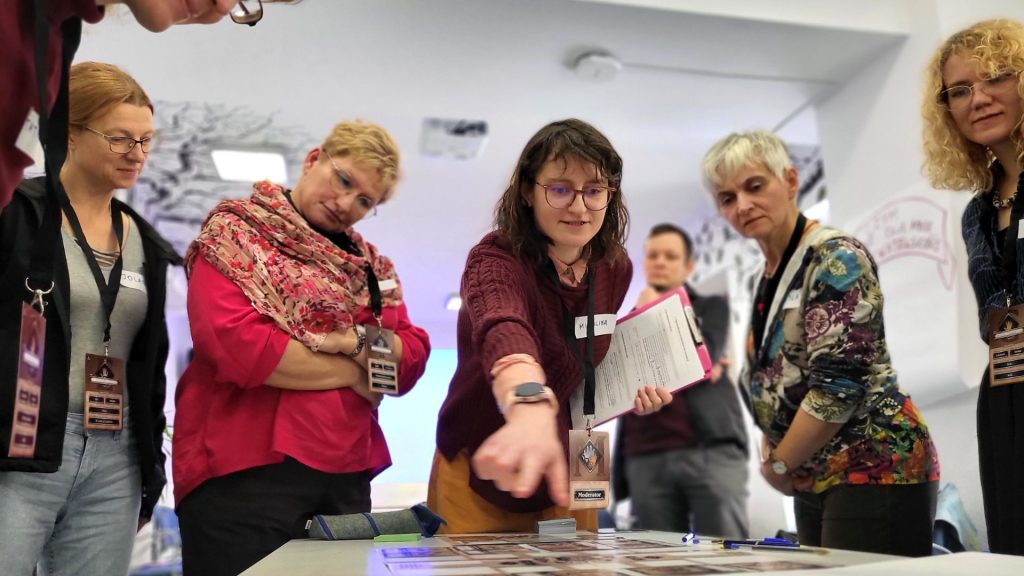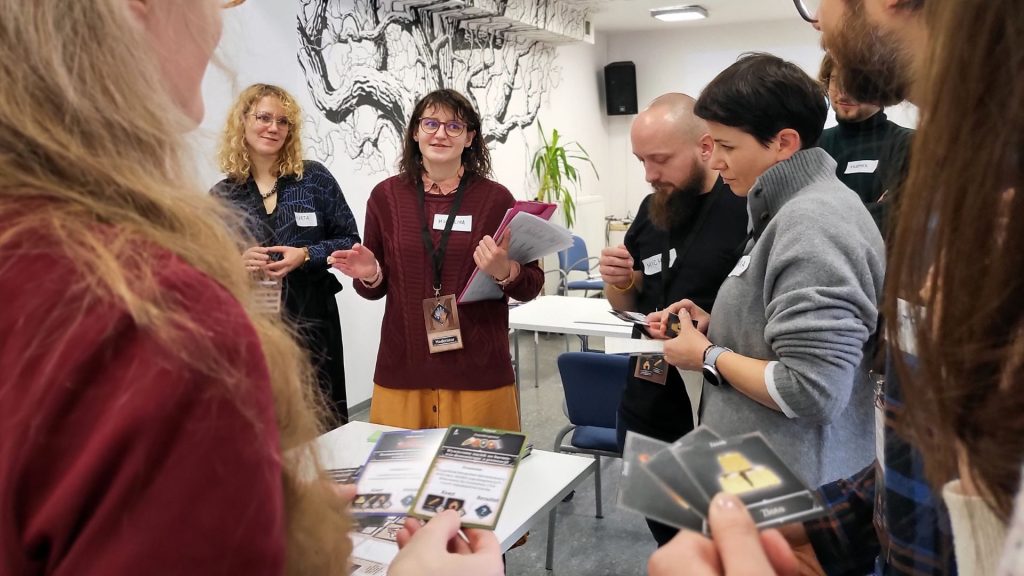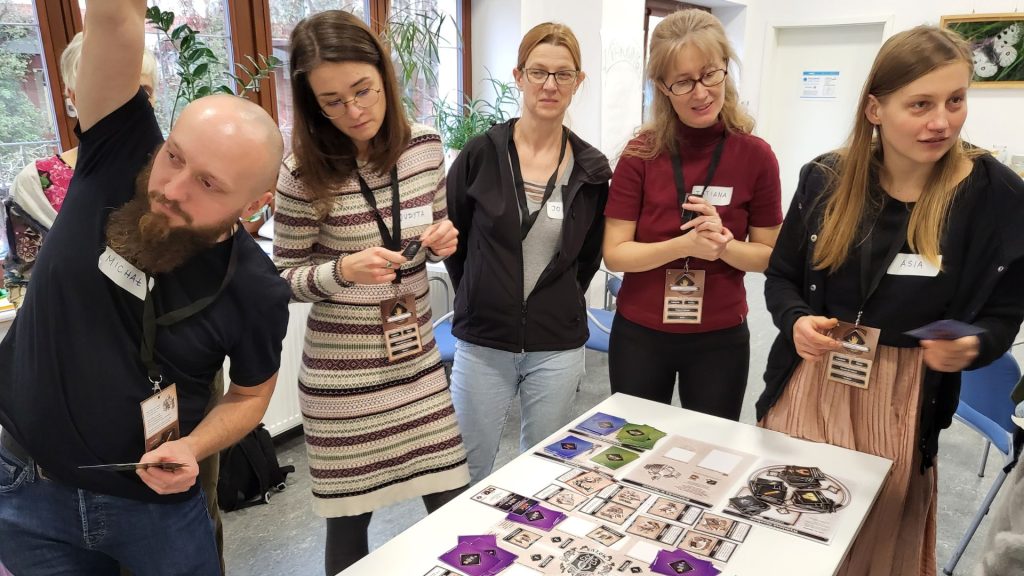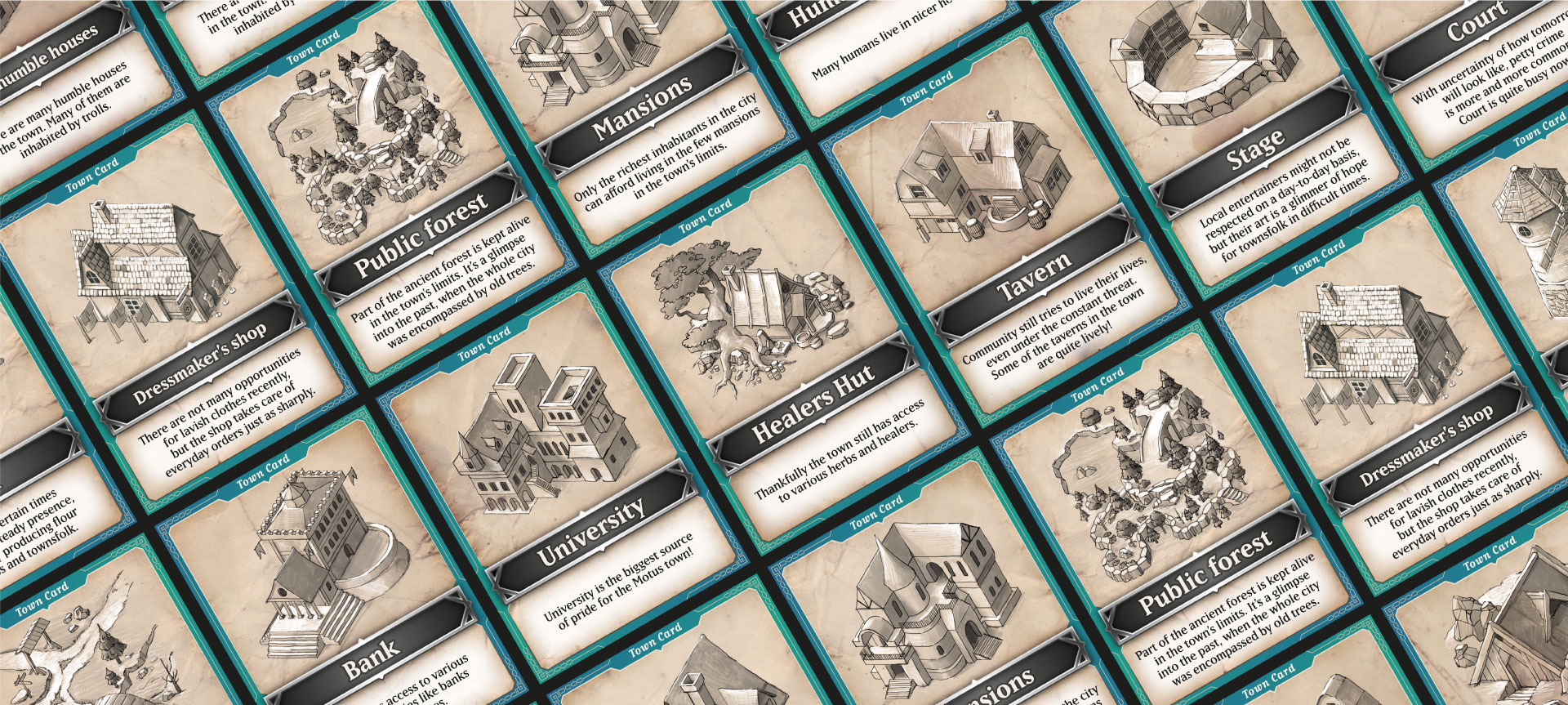Available data indicates a low level of civic education in high schools, but even more concerning is that Poles do not maintain their civic engagement after they turn 25 years old.
The introduction of serious games into civic education presents a new and transformative approach to engaging citizens in understanding complex societal issues. By leveraging the interactive and immersive nature of games, educators and developers are crafting experiences that not only entertain but also deeply educate individuals on the nuances of civic responsibility, sustainability, and social justice. This innovative educational tool bridges the gap between traditional learning methods and the dynamic, interactive demands of modern learners, fostering a more informed, engaged, and proactive civic engagement.
The (After) Fantasy social simulation is an example of educational approach, where real-world challenges are presented using a captivating fantasy universe. Participants gain the opportunity to look at the issues at hand from a different perspective. They face challenges, such as limited human and financial resources, internal conflicts, personal ambitions and uncertainty.
This not only makes the experience feel real, but also deepens the educational impact, making complex civic issues more relatable and engaging for players.
The simulation was created by the Centre for Systems Solutions, in collaboration with partners from Poland – Krytyka Polityczna Foundation and Common Thing Foundation, and Norway – Phronesis SA. The partners worked together on the serious game in a project called “Education for Citizenship”, with the goal to develop and promote tools for civic education for adults. While the Centre for Systems Solutions handled the design and testing aspects, project partners enriched the development process with their insights and expertise. To learn more about (After)Fantasy, Przemek Jankowski had the pleasure to talk to Michalina Kułakowska from the Centre for Systems Solutions – who was the main designer of the game.
Michalina, could you share why you chose a fantasy world as the setting for your serious game?
Choosing a fantasy world as the setting for a serious game goes beyond the immersive aspects of simulation. It taps into the universal appeal and timeless nature of storytelling found in fairy tales, legends, and parables. These narratives, while fantastical, are deeply rooted in human experience and are imbued with lessons, moral dilemmas, and complex character interactions that mirror real-life challenges. By using a fantasy setting, the game can employ metaphors and allegorical elements that resonate with players, making the experience more engaging and relatable.
I think it is also worth mentioning here that in serious games, it’s crucial to enter a “magic circle” for players to immerse themselves in a simulated environment. This fantasy setting allows players to safely explore and test behaviors, observe group dynamics, and interact with others. It offers a safe space for experimentation and reflection, providing players with the distance needed to critically assess their actions and the outcomes within a controlled, imagined context.
How far removed is the world of (After)Fantasy from our real world?
In the game’s setting – the city of Motus, a diverse community faces a looming peril, the Threat. It leads to a scenario where, much like in reality, the official response is lacking, prompting a bottom-up community mobilization. This environment necessitates forging new, sometimes unexpected alliances with a diversity of actors- this mirrors real-life dynamics of cooperation amidst adversity. The game also captures the essence of activism and community organizing, emphasizing the need for communication, engagement, knowledge, and resources, in parallel to the real challenges activists and organizers face, but in a fantastical context.
Are elves and dwarfs essential for the game? It looks like a gimmick element for a fantastical world.
And trolls, don’t forget them! The diversity of characters like elves, dwarves, and trolls is not just for show. It is central to the gameplay, reflecting real-world issues of prejudice and stereotypes based on people’s ethnicity, appearance, or background. These elements serve as metaphors for various societal biases, allowing players to engage with these concepts in a nuanced way. For example, an unemployed elf in the game is inherently respected due to the societal norms within the game’s world – this challenges players to reflect on real-world prejudices and their impacts on our perception and decision-making. But it also adds depth to the game, encouraging players to reconsider their own biases and how they interact with others.

Are players informed about it at the beginning? Should they avoid stereotypical thinking?
The concept of prejudices is intentionally addressed during the debriefing session rather than before the game starts, to avoid spoiling the experience. For me as a game designer, it is important to make sure that the players are engaged and explore diverse worldviews, rather than fall into the trap of thinking of what is the “right” thing to do.
The moderator’s guide book provides detailed instructions and game scenarios, with optional steps to enhance gameplay. Initially, players receive enough information to immerse themselves in the world of Motus without revealing everything upfront. This approach allows them to discover the game’s mechanics and encourages players to think critically about their actions within the game and how they relate them to real-world behaviors. If a player is prejudiced, the moderator should not say “that’s wrong”. Instead, there should be a question about prejudice in the real world, how players see it, will they try to avoid it in the future and whether it’s possible to avoid it completely.
Who did you design the game for?
This tool is for activists, community organizers, youth, adults, and seniors, but it’s not limited only to them. It aims to provide a safe space for reflection and sharing – almost a therapy session focuses on the problems plaguing NGOs or activist collectives. It is a lesson about complex systems, but also about group psychology and one’s own ways of acting. Some people participating in the tests were skeptical about the game – the fantasy world did not appeal to them, but they felt comfortable in their roles and actively countered the Threat. The game allows you to become an elf or a troll, but also to take on the role of a group leader or someone rich in resources or skills. This facilitates greater empathy and puts forth questions: “what if I were poorer?”, “What if she, the leader of our organization, left us for another group?” or “What if my environment didn’t tell me what they know?” Basically, (After)Fantasy allows you to take a walk in someone else’s shoes or stay in your own. The decision is up to the players.
Okay, so how can one participate in a workshop of (After)Fantasy? Or what does someone need to do to run the game? How much does it cost?
(After)Fantasy is made available for free on our website. You just need to download the materials, familiarize yourself with the moderator’s manual, and then print the materials according to the instructions. It’s a good idea to ask someone for help with printing and cutting out the cards, as well as setting up the tables and board. I recommend playing at least 3 rounds, which takes about 3.5 hours. It’s worth having a timer or a watch on hand to precisely control the time.



(After)Fantasy is one of many examples of the transformative power of serious games in the realm of civic education, blending fantasy with social activism and engagement. Having had a chance to experience it, I can say that the game’s strategic placement in the mythical world of Motus serves not only as a backdrop for adventure but as a reflective mirror to our own world, challenging players to tackle societal issues with empathy, strategic insight, and collective action. This fantasy framework, as discussed earlier, employs the universal language of myths and legends to foster a deeper connection with players, making complex themes more approachable and engaging through allegory and metaphor.
Moreover, the game’s diverse cast of characters and scenarios enriches this immersive journey, inviting players to confront and reconsider their preconceptions in a context that is both fantastical and profoundly relevant. Because the game is easily available on the (After)Fantasy website its educational potential is not confined to a select few but is extended to all those willing to use it.
By revisiting the core elements outlined at the outset – the safe experimental space provided by the fantasy setting and its capacity to universalize and delve into critical issues through storytelling – (After)Fantasy embodies a cohesive and powerful educational experience.
An essential product of the project is a handbook on “Civic Education in Action”. The serious game was created as part of the “Education for Citizenship” project, which received funding of EUR 171,017.00 from Iceland, Liechtenstein, and Norway under the EEA Grants.

